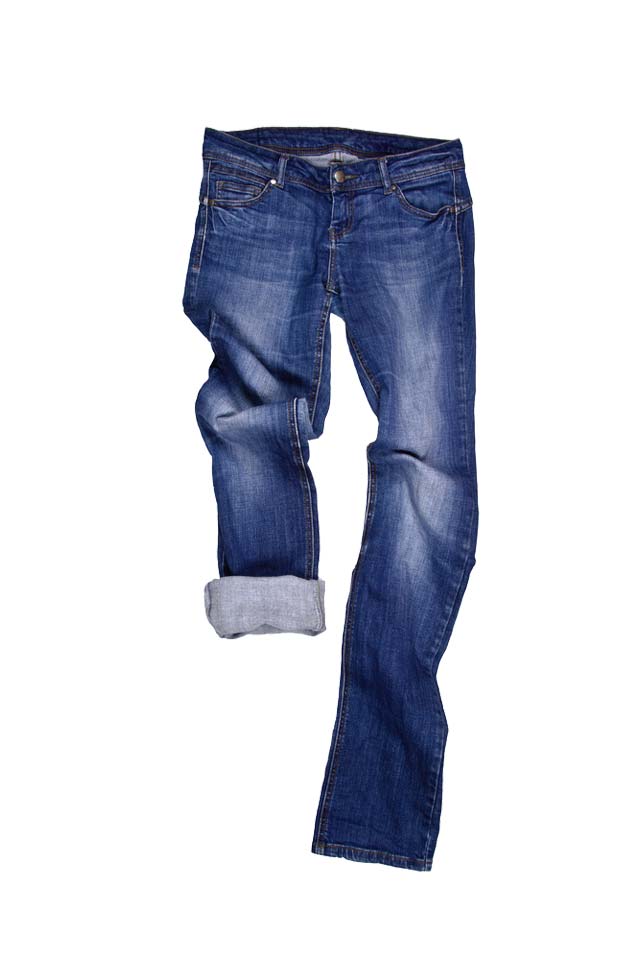
I work out in the mornings, eyes popping open like newly christened jam jars. My routine involves driving to the gym in the dark, hyping up on coffee, pinpointing goals of how far I am going to run, bike or row that day and what pace I would permit myself to take.
Everything is neatly planned out in my brain.
On one particular morning, in fact, the run was ordinary. The time was typical. The routine unnoteworthy. Everything unfolded as it was meant to unfold — I ran, I chatted, I showered. With 15 minutes until I needed to report to work, the world was just right. I was alive and awake and engaged and nourished.
I was fueled to take on whatever wrench life had for me. That’s what exercise can do; it can make you feel like a mechanic trained to handle life’s heavy tools.
And then, I put on my pants.
Rather, I tried to put on my pants. Another gym rat was chatting with me about the coolness of the weather when she stopped midsentence, witnessing my struggle. She refrained from vocalizing and hurried out of the room to give me privacy. I had managed to get both legs in (I have always plunged both feet in no matter what the action) and the pants were stuck half-thigh.
Yank up? Yank down? Not knowing what course to take, I sat down with my pants neither on, nor off. A familiar woman walked into the room, greeted me by name, and we tossed a few exchanges back and forth before she skipped off to her elliptical, oblivious to my personal crisis.
My heart rebroke, and I was breaking up with it.
Wrong fits, whether in clothes, jobs or in relationships, feel nothing short of failure.
Strange how a pair of pants can incriminate one’s discipline. Was it the cheesecake? that (or those) second glass(es) of wine? my habit of scooping walnuts straight from the bag? our trip to Spain?
Despite the fact that only a few seconds lapsed, my mind clicked through a dozen or so culprits of my lack of resolve. I had let myself down, and sure enough, my thighs raged their usual revenge.
And then, a rally in my logical war occurred. But I exercised! I watched my carbs! I said no! I have turned away, like, a million office cupcakes! I have not touched fast food in years!
No matter what my argument, the evidence was clear: the pants were not going on. Denial was clearly not an option, so deflection was weaponed: I momentarily blamed my laundry skills. I quickly questioned whether the new organic detergent I recently purchased had side effects that caused my pants to shrink a size — as if it was a little over eager to reduce waste.
Still, they had to come off, and the sweaty jogged-through yoga pant had to come on. I had a patient scheduled in 15 minutes and no spare outfit.
Here’s the thing: I was/am addicted to doing well. I had graduated from Harvard, scaled the Great Wall of China, donated my hair to Locks of Love, harvested mussels in Brittany, France, drank the world’s best beer with a former monk and survived the summit of Mount Kilimanjaro.
And here I was, hunched into the corner of the locker room, paralyzed by the evidence of failure.
Of course, I laughed about the scene when confessing it to others that same day. I made jokes, I deflected, I “coped well,” I carried on. I even forgot about it. Then I ate a salad for lunch.
I had become too big. I had become too large.
But underneath those fears was the bigger one: I will live a life that does not fit me.
The wrong fit often makes us doubtful, restricted, anxious. With wrong fits, we take unexpected changes in our lives as indictment of our own personal failures. Or, we start to twist the normal pains of developing, aging and changing into a disorder.
The wrong fit is not about failure at all. It’s about learning. It’s about growth. It’s about change. But we often choose self struggle, recrimination and loathing instead of grace.
In these days of self hatred, of doubts in ourselves, our wrong fits distract us from a core truth: We are capable of finding our right fits. We can choose to work hard and also choose softness and ease. The choice of less resistance often takes as much effort and challenge as the hard path. It involves training our attention to what truly feels good and the people and places and activities that make us feel OK.
Instead of squeezing myself into a tizzy of insecurity, I could accept comfort and relaxation — in the form of yoga pants.
I am thanking God for Spandex.
(Dr. White is a pediatric psychologist at Landstuhl Regional Medical Center and the developmental health consultant for
Europe Regional Medical Command. She specializes in healthy habits across the lifespan and evaluating developmental disorders.)


